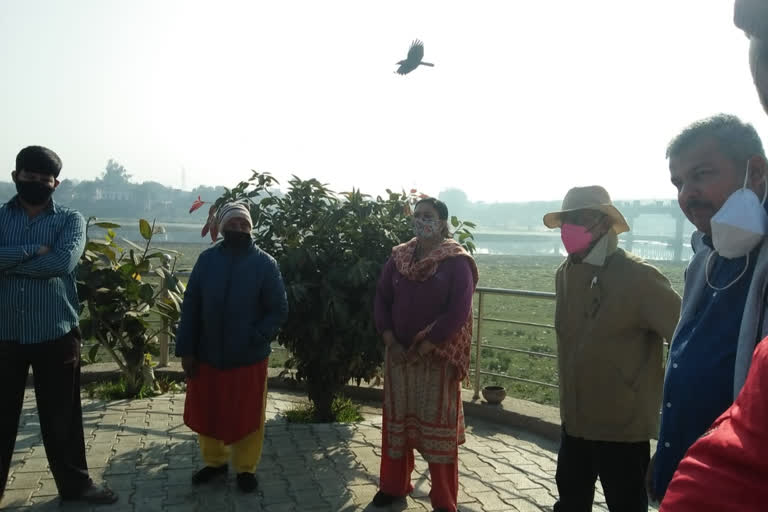Agra: Taj city's environmentalists and river activists on Sunday, staged a dharna and organised a big meeting to protest the construction of a four-lane road through the Keetham reserve forest along the Yamuna river, close to the Soor Sarovar, a recently declared Ramsar wetland site.
In a resolution, the eco-warriors said the Keetham reserve forest was a critical green buffer between the Taj Mahal and the Mathura Oil Refinery. "The whole area is full of ecological and mythological sites, including the memorial of the blind bard of Braj Bhasha Soor Das, the world's largest sloth bear shelter, Bhagwan Parsu Ram's mother's temple, the Shani Dev temple, plus the largest artificial lake in UP, running parallel to Yamuna river.
The dense forest cover supported hundreds of species of birds, pythons, and other wild-life species. The proposed road to connect the Yamuna Expressway with the Agra-Delhi national highway was ill-conceived, irrelevant and a threat to environmental equilibrium in the region."
An environmentalist Dr Devashish Bhattacharya said, "The builders lobby, the land grabbers and encroachers were eyeing prime fertile land in cohoot with corrupt elements of the bureaucracy. Agra is already environmentally distressed. Even three decades after the Supreme Court intervention to secure good health of the Taj Mahal, environmental conditions in the Taj Trapezium Zone (TTZ) had not improved. The air and water pollution continue to increase at an alarming rate."
READ: 'Love jihad' theory disproved; couple endures miscarriage
The activists demanded total restructuring of the Taj Trapezium Zone Authority, that came into existence in 1982 through an Act of Parliament, to give a direction to sustainable development and contain pollution in the 10,400 sq km area around the Taj Mahal.
In another resolution they demanded that instead of the divisional commissioner, the TTZ Authority should be headed by a retired Supreme Court judge or a member of the National Green Tribunal. The multiplicity of state government agencies in Agra, Mathura, Firozabad districts that constitute the TTZ, had made the TTZ Authority ineffective.
The meeting demanded early construction of the Yamuna barrage downstream of the Taj Mahal, release of water in Yamuna before the Vrindavan Kumbh in January, desilting and dredging of the river bed and start of the ferry service between Delhi and Agra, as announced by Union Minister Nitin Gadkiri.
IANS



